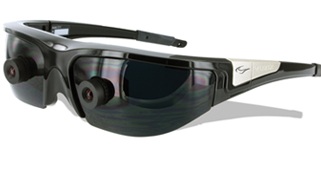 New AR goggles are giving people who are blind in one eye the chance for 3D vision.
New AR goggles are giving people who are blind in one eye the chance for 3D vision.
A university in Japan has just developed a software that has allowed 3D glasses to be converted into a high tech augmented reality that provides individuals who are blind in one eye with the ability to experience depth perception through the single healthy eye.
This is accomplished by compiling the images from the perspective of both eyes and projecting it to one.
The result is that even with a single eye, the wearer of the augmented reality glasses is capable of experiencing the perception of depth. This is a capability that is typically available only to people who have two functioning eyes. This is because the brain would usually require the perspective of both eyes to be able to compile the necessary information for judging depth.
However, the software combined with the glasses creates an augmented reality replication of that effect.
Depth perception is the ability to judge the distance that exists between two objects. For instance, gauging how far your hand is from your coffee cup on the table, or deciding how close you are to the car ahead of you in traffic. Without this technology, a single eye is not capable of providing adequate signals to the brain that will provide that perception of depth.
The augmented reality glasses that have been created to overcome that problem, even with one seeing eye, were developed by a research team at the University of Yamanashi in Japan. They used commercially available 3D glasses and linked them with the software that they developed for producing the experience of depth perception in the eye of the wearer.
At the head of the team was Xiaoyang Mao. Together, they used the Wrap 920AR glasses from Vizux Corporation, which are sold as 3D glasses for individuals with vision in both eyes. These glasses were converted into an augmented reality experience through the two camera lenses that are installed in front of each eye on what would otherwise appear to be a pair of tinted sunglasses.
The camera lenses in the augmented reality glasses capture images that would be seen by both eye. These are fed into a computer, which uses the software to generate an image for a single eye using a “defocus” effect, where some images are more crisply defined than others. This produces the same effect as depth perception, but is transmitted through a single eye.

